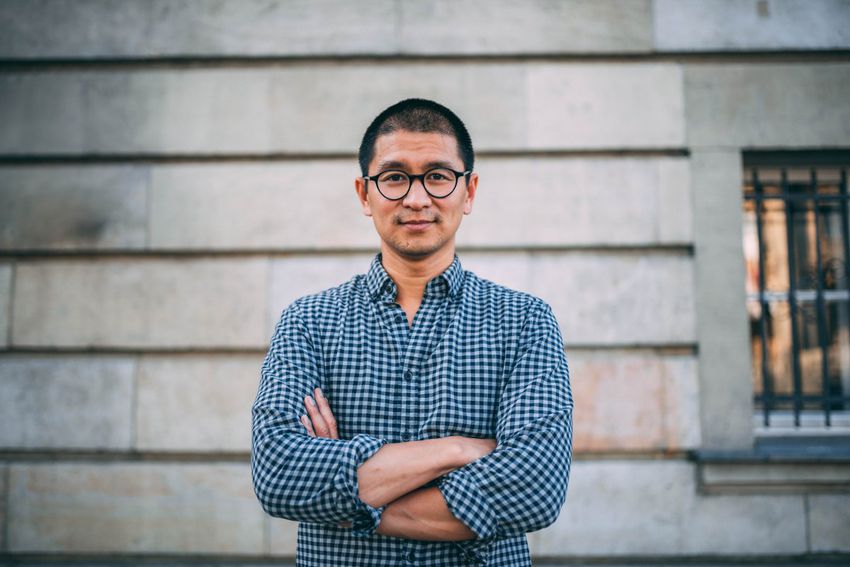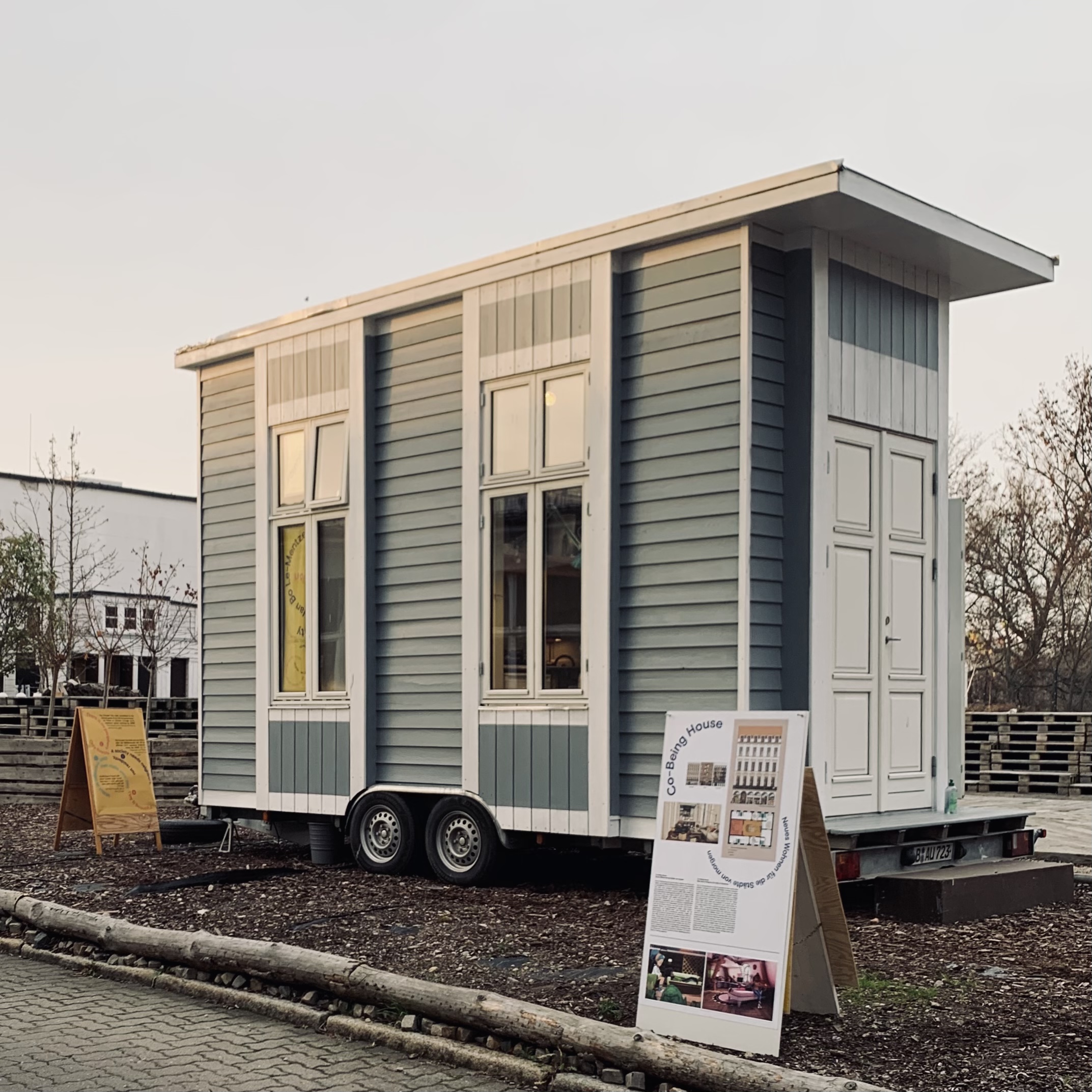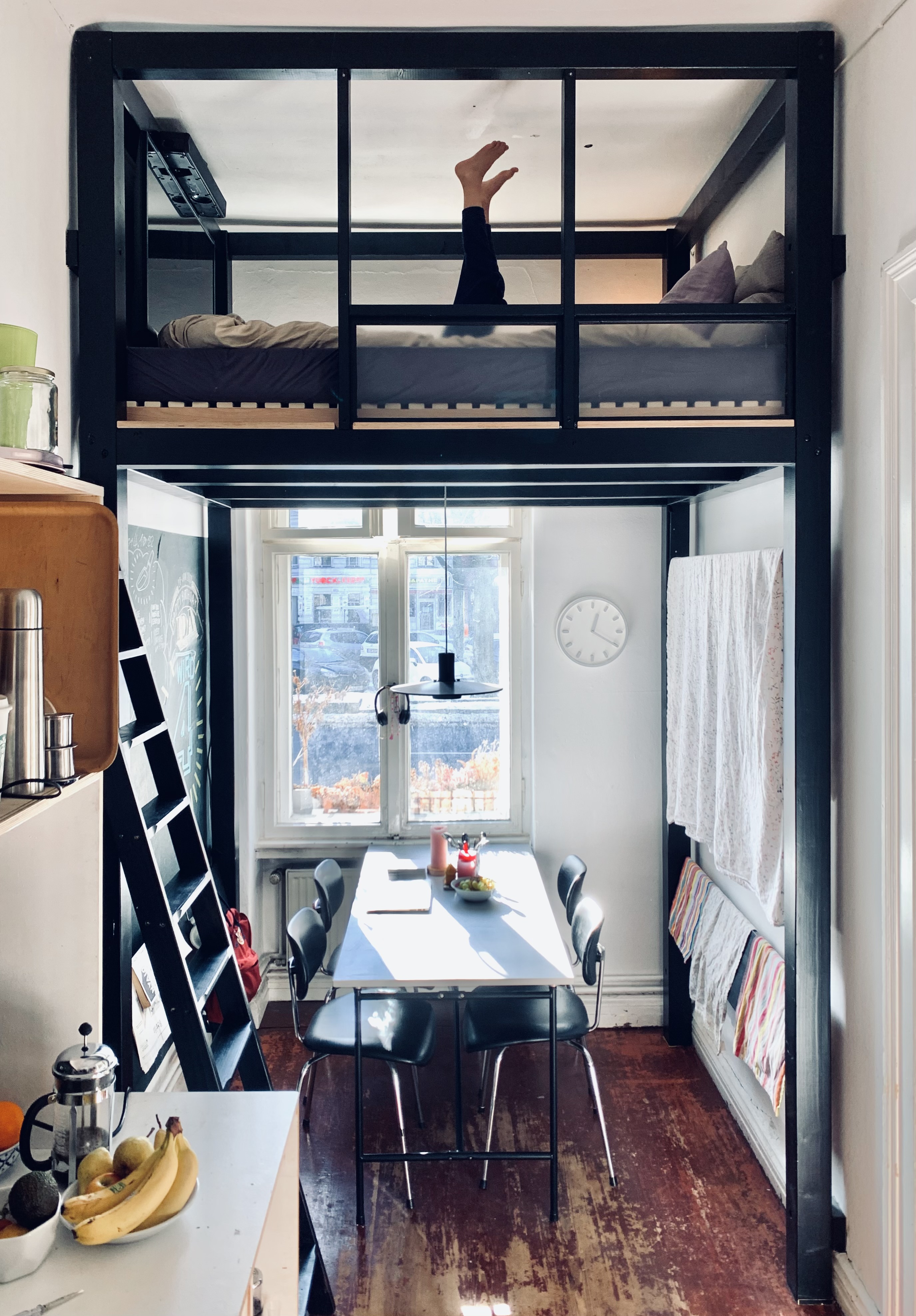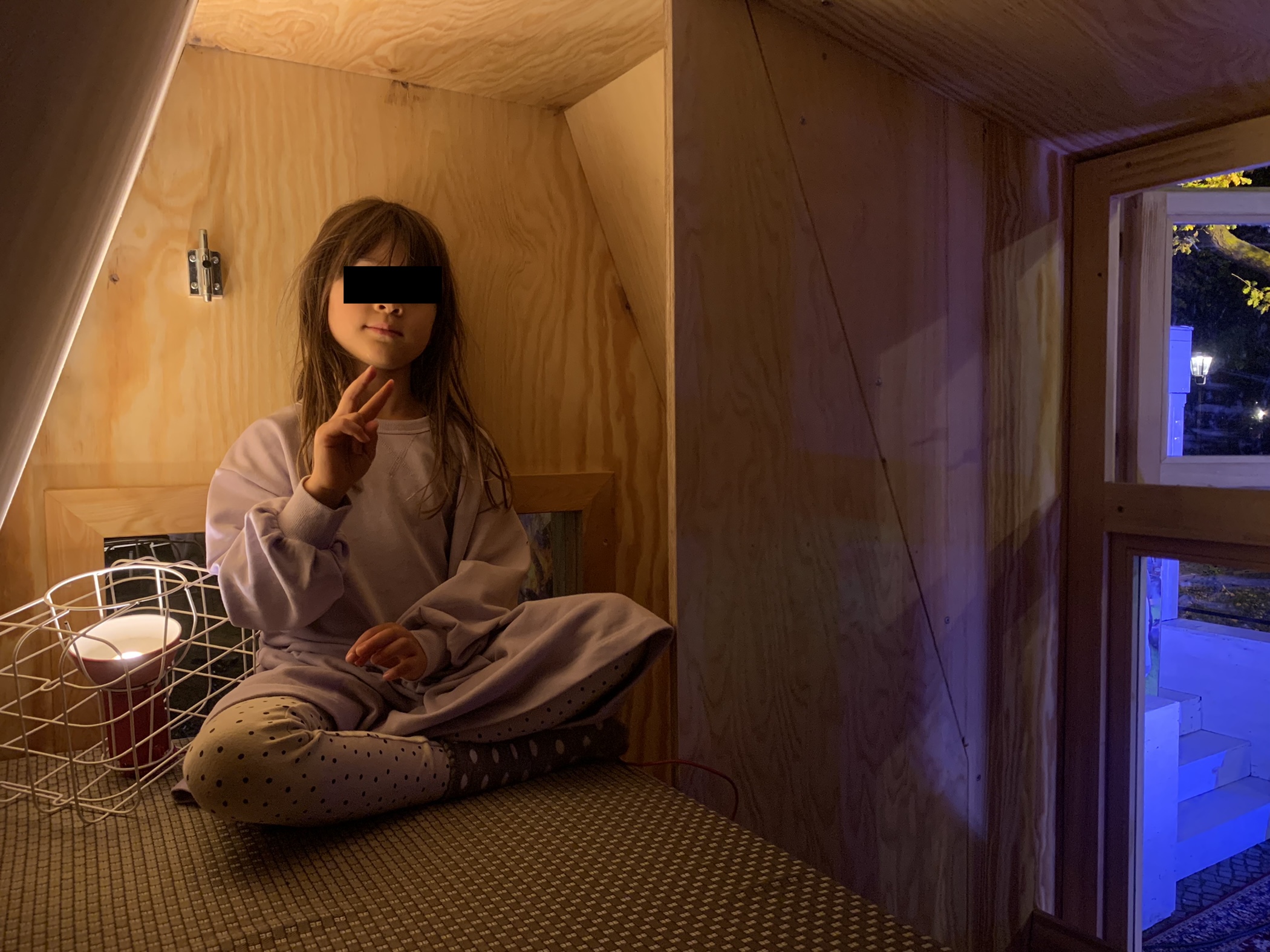Sustainability, Consultation
Björn Barutzki: "We see ourselves as cultivators"
What sustainability advice and services are available for Berlin companies …

Van Bo Le-Mentzel has been doing one project after another for years - now he wants to transform the city in a socially ecological way. He calls it "Circular City." What does he have in mind?
CCB Magazine: Van Bo, you've been engagingly active for years. On the one hand you build Hartz-4 furniture that anyone can replicate, then you make fairly produced Karma Chucks. And for some time now, you've been building Tiny Houses and encouraging urban discourse. Would you describe yourself as a restless person?
Van Bo Le-Mentzel: I would say that I am versatile interested and active! What I do, I do with total pleasure. And above all, I let myself be inspired by others, but I also carry my ideas into society. I call it "crowducation" - learning through projects with like-minded people. No science can do that.
CCB Magazine:Is there something overarching that connects all your activities?
Van Bo Le-Mentzel:The desire to create and the need to be involved in society. The underlying question is how do we organize a society that is suitable for grandchildren? How do we shape a world in which our children and grandchildren will also say one day: Hey, our grandparents did that for us! In this society, the economy must start with the "we". The ideas, the solutions do not come from industry top down, we invent them. And to this end, I am testing with various projects how the crowd can be used to create a better, more socially just and more innovative society.
The question is how we organise a society that is suitable for grandchildren: how do we shape a world in which our children and grandchildren will one day say: Hey, that's what our grandparents did for us!
CCB Magazine:The focus of your last work was on new forms of housing. To this end, you founded the non-profit NGO Tiny Foundation and the association Tinyhouse University and built the smallest apartment in Germany, a Tiny House with 6.4 square meters. What is socially just about that?
Van Bo Le-Mentzel:The Tiny House is called the "100-Euro Apartment." It is a design to counter rising rents and the shortage of living space in cities. I want everyone to have a right to low-cost housing. I call that unconditional basic housing. And the 100-euro apartment is the smallest housing unit in a townhouse called the Co-Being House. There's a mezzanine on the bathroom ceiling for sleeping, and a kitchenette plus bathroom below - everything you need and affordable for everyone. It would be too small for families, of course. They can pair several 100-euro apartments together right away. The Co-Being House, on the other hand, functions like a multigenerational house with a common room. The basic idea behind it is that many are looking for new forms of collective togetherness. But people don't want to attend plenary sessions to discuss bathroom hygiene. The co-being houses can be designed individually. One has access to the community, but can also withdraw. I'm interested in the concept of a Circular City.



CCB Magazine:What do you mean by Circular City?
Van Bo Le-Mentzel:Circular City means that you can reach as many places as possible from where you live: Offices, schools, universities, hospitals, allotments, workshops, factories, etc. Close by. The mistake of modern urban planning is to separate different forms of use - whether commercial, residential or allotments. This increases the CO2 footprint because people have to commute all the time. And even if all buildings were energy retrofitted overnight, we would still be emitting too many greenhouse gases because we often travel such long distances. Today, traffic is responsible for about 20 percent of all greenhouse gases. And even bicycle tires cause particulate matter! That's why we not only have to massively reduce our mobility. We need to adapt our environment so that we can reach everything on foot.
CCB Magazine:This sounds like a lot of squeezing and urban densification. Why don't such co-being houses exist yet?
Van Bo Le-Mentzel:I have already been able to design the first prototypes of the Co-Being Houses in a student dormitory in Wolfsburg and in Basel. And who knows, maybe they will become reality at some point. The concept of the Circular City, on the other hand, has not yet been tested. However, I have run through the sample floor plans at Berlin's Tegel Airport, because the concept would work very well here. Here, industry for e-mobility is planned after the closure of the airport. The current plans call for large halls for the production of electric motors to be built on one side and residential areas on the other. I think this is a big mistake. Instead, each block should become its own urban center - a Circular City in its own right, where you can find everything that the residents of the neighborhood need to live.
CCB Magazine:But many don't want to downsize at all. And if everyone can put up a Tiny House somewhere, places will become denser and less attractive to live in. Conflicts due to noise pollution are also pre-programmed if parks are built on rooftops. Doesn't the concept miss the point of reality and people's basic needs?
Van Bo Le-Mentzel:Not at all! It is geared to the needs of the local people. Of course, you have to coordinate everything. For example, unused space could be reorganized via blockchains and artificial intelligence. An algorithm would know whether an area is free in a certain period of time - for Tiny Houses, for example. And a one-meter-thick layer of earth between the lower and upper levels would allow clubs, apartments, and even industry to be within walking distance - without noise pollution. The lower level of commerce and industry would be accessible to everyone. The second level, that of gardens and apartments, would be for the neighborhood only. Both levels are connected citywide, making them circular. A new car-free and circular city would be created that never existed before.
CCB Magazine:But most people are sticking with their cars. Between 1990 and 2020 alone, car traffic increased by 26 percent nationwide. Politicians can't even decide restrictions on speed limit.
Van Bo Le-Mentzel:That is regrettable, yes, but that it can be done is shown by the Scandinavian urban planner Jan Gehl, who years ago simply made Times Square in New York car-free. According to Gehl, urban planning should not be geared to the number of cars. It must be adapted to the needs of people. In Barcelona, for example, the so-called superblocks have cut stationary traffic in half. At some point, we won't need cars in cities like Paris or Manhattan if people can live in the places where they work or work on the move thanks to a new home office law. And from an ecological point of view, we don't have any other choice. The carbon footprint of our transportation cannot be reduced by adding more cars, even if they are all Teslas. Batteries also consume finite resources from the earth.
CCB Magazine:How does the Circular City solve the problem of more and more people moving to cities? In 1950, not even a third of the world's population lived in cities. Since 2007, it has been more than half. According to UN calculations, it will be two-thirds by 2050. It's not just living space that will continue to shrink. Urban areas are also responsible for 75 percent of energy consumption, in other words: the climate issue will be decided in cities. Cities are already eight degrees warmer than rural areas. Shouldn't people move out of the cities and into the countryside to make use of the fallow land there?
Van Bo Le-Mentzel:Both are possible, unfortunately it just hasn't worked so far with rural areas. There are simply too few people per square kilometer, too few to guarantee an economic basis for running both a pub and a clinic. The beautiful Prignitz, for example, has just under 40 people per square kilometer. My plea is: we must fight the causes of commuting. No more building dormitory towns on the outskirts of cities that circle around the city like satellites. We need to stop urban sprawl and expand unsealed areas and nature preserves. And let's rather redensify compact independent small towns the size of Wittenberg to 20,000 inhabitants per square kilometer and equip them with an untouchable green belt. We could theoretically put the entire state under conservation and distribute the population among the seven largest cities on the scale of NRW; that would be better than further fueling the megacity trend of a few individual cities.
CCB Magazine:Van Bo, how do you live actually?
Van Bo Le-Mentzel:I myself live with my wife and our two children in a two-room apartment in Kreuzberg. When the children came, the question naturally arose whether we would move. I thought to myself, no! I want to live here. I like the neighborhood, my friends live here and the rent is affordable. Since then, we've been using the space more effectively. I just moved in new spaces in the apartment, and I use the café down the street as my office. I receive guests there, my printer is also located there, I've cleared all that with the owner. And when I need some peace and quiet, I lie down in my Tiny House. It works.
Do you know it? Our new magazine on sustainability and culture
You want to have the new CCB Magazine for free? [Click here]
Category: Specials
Also a good read
Subscribe to our monthly newsletter!